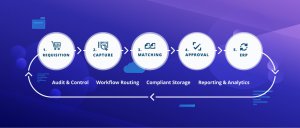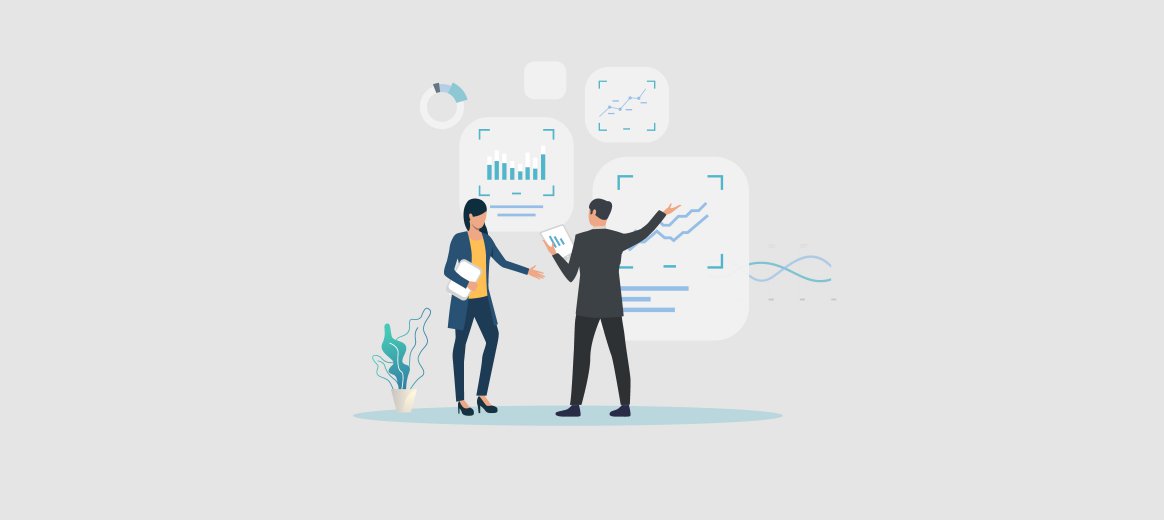Senior leaders are feeling the pressure. Before the Covid-19 outbreak, strategies were already focused on driving down costs and saving time. Today, business models, budgets and processes are evolving on a weekly basis, as finance leaders scramble to keep their businesses afloat.
Pre-pandemic days, a survey by Deloitte found that a top priority for more than half of CFOs was to reduce costs. Now, the attention is firmly on cost containment, with a PWC report showing it’s on top of the agenda for 64% of organizations.
In order to contain spending, senior leaders want visibility into all aspects of the finance process as well as recommendations based on data and trends. As a result, an increasing number look to modernize their Procure-to-Pay (P2P) processes.
Why are organizations modernizing their P2P process?
Firstly, modernizing a P2P process does not mean that a full ERP replacement is needed. It is simply leveraging technology to streamline the process of a company buying and paying for goods and services. This is invaluable to companies who are struggling to get a clear overview of their operations. Additionally, organizations who have successfully modernized their P2P process are experiencing significant benefits, which include:
Cost Reductions
Automating the P2P process gives senior management a full understanding of how the organization is performing. It provides Procurement with pre-approved spending under certain categories, so they have complete control of outgoings and they will only be able to purchase items from preferred suppliers to prevent any maverick spend. Information into vendor performance is readily available, as well as the statistics on how many early payments were captured or late payment fees were paid by Accounts Payable. All of this information allows finance leaders to negotiate better pricing, prevents vendors from overcharging, and allows for better strategies around spend to be implemented.
Save Employee Time
P2P automation will take over the manual tasks that consume employees’ time, such as scanning, printing, manual data entry, and filing. Additionally, invoices are routed for approval saving staff from manually chasing people. 80% of invoices on average, are successfully matched three ways, so the AP team only handles invoices with exceptions. This gives back more man-hours to the organization allowing employees to focus on more high-value activities.
Visibility
Finance leaders often have very little visibility into the finance process. Many have no idea where a particular invoice is at any given time, or if a PO was fulfilled and received. It can be difficult to complete timely accruals or to promptly resolve queries. By automating the P2P process, a finance leader can manage the entire P2P process on one system with one single interface. Decision-makers will have access to trends and the department’s progress towards goals.
Decreasing the risk of human error
In addition to cost savings, the risk of human error is dramatically decreased. In cases where the process is fully automated, human error is eradicated entirely. Examples of human error within an un-automated P2P process include; duplicate invoicing, paying an incorrect amount, or paying the invoice to an incorrect supplier.

The 5 Stages of P2P Automation
The P2P process ranges from the request for the product to the issuance of the PO, receipt of the goods, and finally the processing and payment of the vendor invoice. Successful organizations are modernizing their P2P processes by automating each of the steps involved. P2P automation can be achieved by transforming the following tasks:
Requisition
Requisition automation ensures that an organization is always in complete control of a company’s spend from the start. Finance leaders can create predefined catalogs with approved vendors. Requisitioners can choose products and services directly from this collection. This means that full visibility is maintained over what is being purchased and why.
Invoice Capture
All types of invoices (including paper, PDF, fax, EDI, XML, and email) can be automatically captured through automation. Touchless processing for most invoices through capture, matching, and approval, results in the AP team only handling exceptions. Problems such as duplicate invoices, missing PO numbers, and unregistered vendors are stopped at source before they cause bigger problems and more work downstream.
Invoice Matching
Automated matching of POs, invoices, and goods received notes eliminates manual paper-based processing. Technologies such as Optical Character Recognition (OCR) typically result in the straight-through processing of up to 80% of all invoices.
Invoice Approval
Approval automation allows for invoices to be routed electronically which reduces approval times. Complex rules based on roles, hierarchies, and varying approval limits can be configured to ensure adherence to company spend policies. Sophisticated workflow automation can even enable approval routing across multi-entity organizations.
ERP Integration
P2P automation software integrates seamlessly with an organization’s existing ERP system. This ensures full visibility of the entire P2P process along with a complete audit trail for every transaction. Reporting analytics enables finance leaders to continuously monitor and improve the operational P2P processes while also delivering timely and accurate month-end reporting.
Conclusion
The digital age has begun to reshaped finance, as a PWC survey found that over 70% of CEOs see digital technology and automation as an opportunity to enhance operational efficiency, customer experience, and innovation capacity. However, more importantly, in times like these, technology can provide assurance and a clear strategy to reign in spending and contain costs by providing visibility. By understanding the stages of P2P Automation, senior leaders can identify processes within their own organization that would be improved and would greatly benefit, like many others have, from implementing automation.


